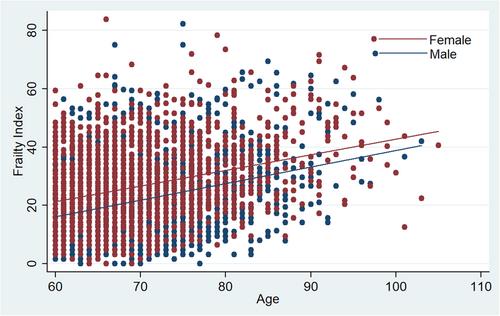The prevalence of frailty and its relationship with sociodemographic factors, regional healthcare disparities, and healthcare utilization in the aging population across India
Abstract
Objective
To estimate frailty prevalence and its relationship with the socio-economic and regional factors and health care outcomes.
Methods
In this study, participants from the harmonized Diagnostic Assessment of Dementia for the Longitudinal Aging Study in India (LASI-DAD) were included. The frailty index (FI) was calculated using a 32-variable deficit model, with a value of ≥ 25% considered as frail. Data on demographic (including caste and religion) and socioeconomic profiles and health care utilization were obtained. The state-wise health index maintained by the government based on various health-related parameters was used to group the participants' residential states into high-, intermediate-, and low-performing states. Multivariable and zero-inflated negative binomial regression was used to assess the relationship of frailty index with sociodemographic characteristics, health index, and health care expenditure or hospitalization.
Results
Among the 3953 eligible participants, the prevalence of frailty was 42.34% (men = 34.99% and women = 49.35%). Compared to high-performing states, intermediate- and low-performing states had a higher proportion of frail individuals (49.7% vs. 46.8% vs. 34.5%, P < 0.001). In the adjusted analysis, frailty was positively associated with age, female sex, rural locality, lower education level, and caste (scheduled caste and other backward classes). After adjusting for the socio-economic profile, FI was inversely associated with the composite health index of a state (P < 0.001). FI was also significantly correlated with total 1-year health care expenditure and hospitalization (P < 0.001 and 0.020, respectively).
Conclusion
There is a high prevalence of frailty among older Indian adults that is associated with sociodemographic factors and regional health care performance. Furthermore, frailty is associated with increased health care utilization and expenditure.


 求助内容:
求助内容: 应助结果提醒方式:
应助结果提醒方式:


